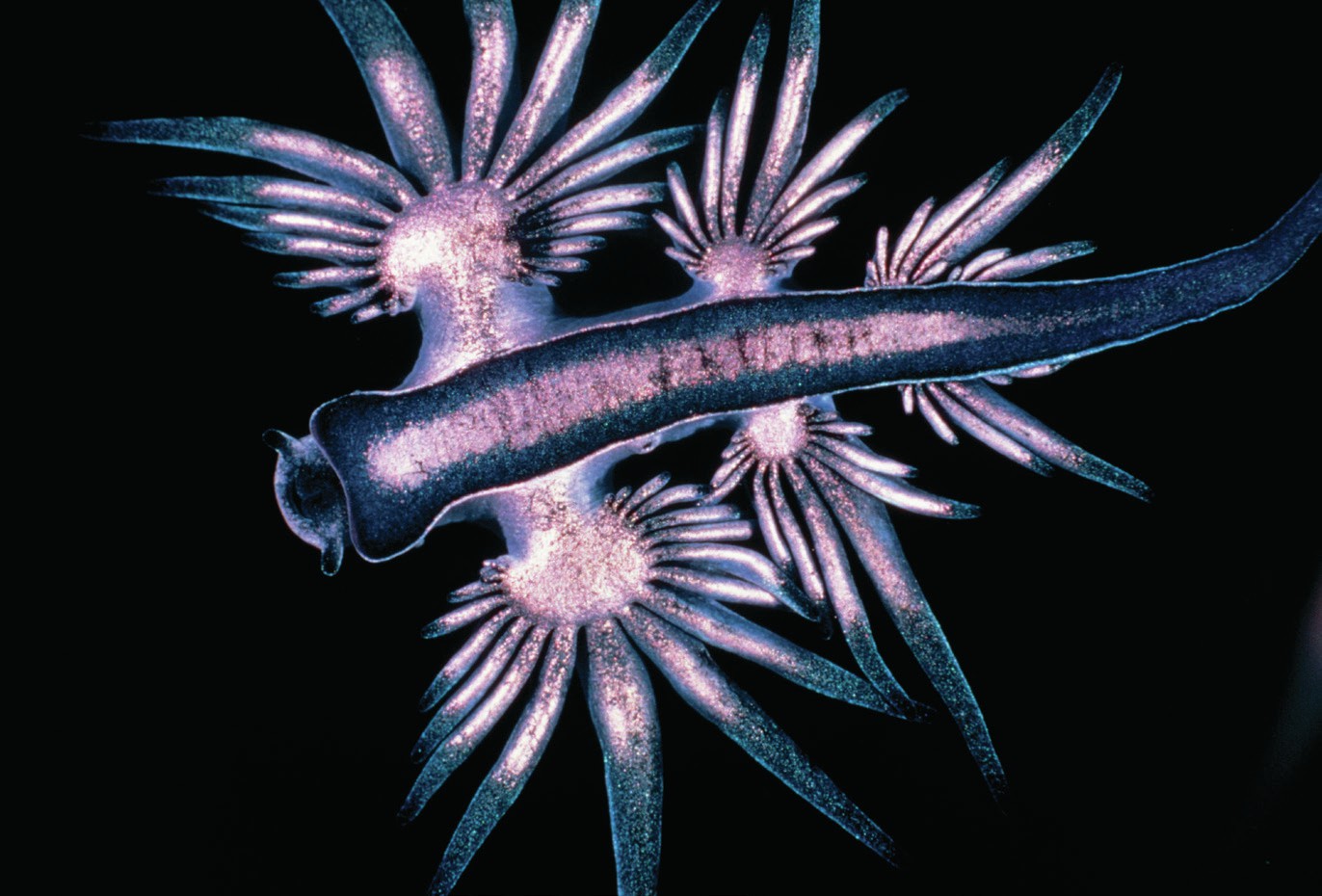
Sea slugs are gastropods (‘feeding-foot’ animals), related to the common slugs and snails in your garden. They are found all over the world, wandering the oceans looking for food and mates. Apart from their obvious beauty and diversity, sea slugs have very interesting lives. Most are nudibranchs, which means that their gills are exposed — often as a colourful tuft on the back of the animal — allowing for better gas exchange with the surrounding water.
The nudibranchs are carnivorous and some are extremely voracious — hunting and eating fish and invertebrates, including other sea slugs. Some are poisonous, or at least unpleasant tasting (see www.youtube.com/watch?v=EuVvkQ3VYM for a clip of Pleurobranchaea californica attempting to eat the unpalatable ‘Spanish shawl’ sea slug). The ‘blue angel’ Glaucus atlanticus (A) takes this to extremes, being highly venomous (see www.youtube.com/watch?v=6MfLTRkPHpo for the story of how this tiny slug acquires its poison from the Portuguese man-o-war).
Your organisation does not have access to this article.
Sign up today to give your students the edge they need to achieve their best grades with subject expertise
Subscribe




